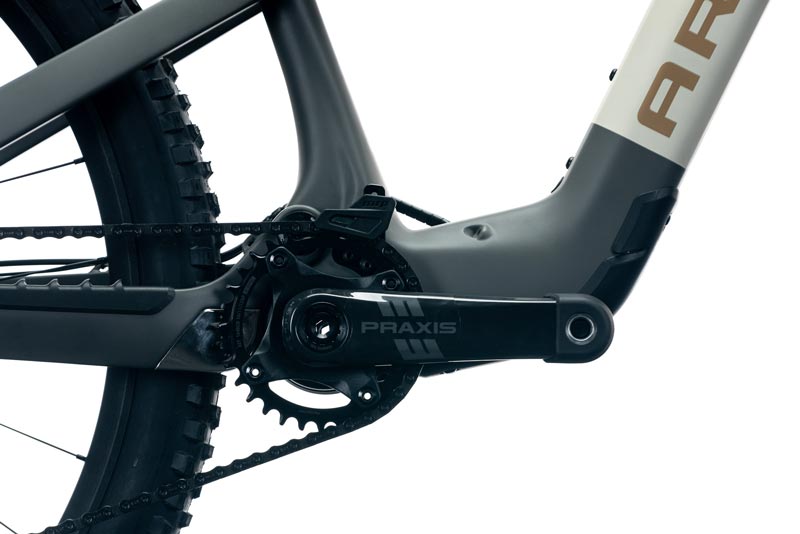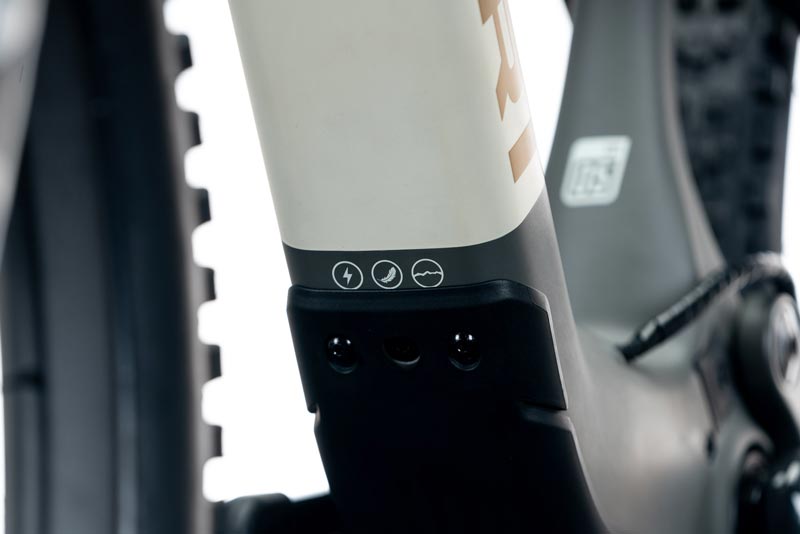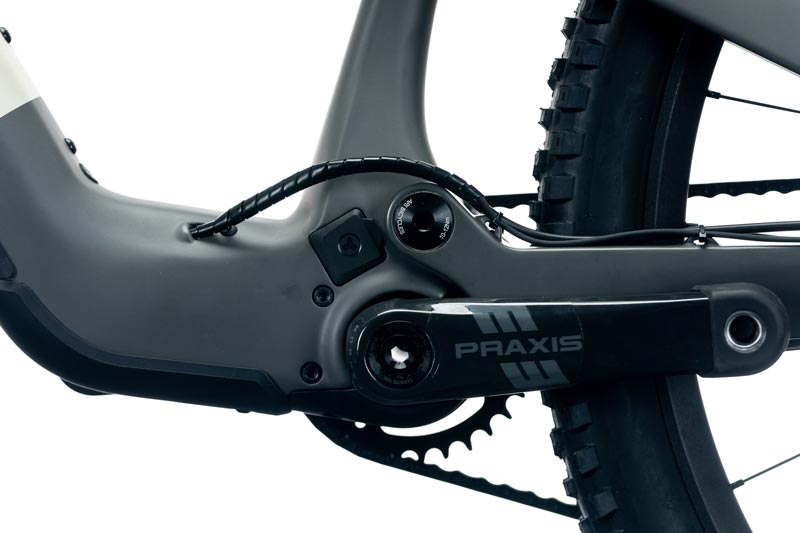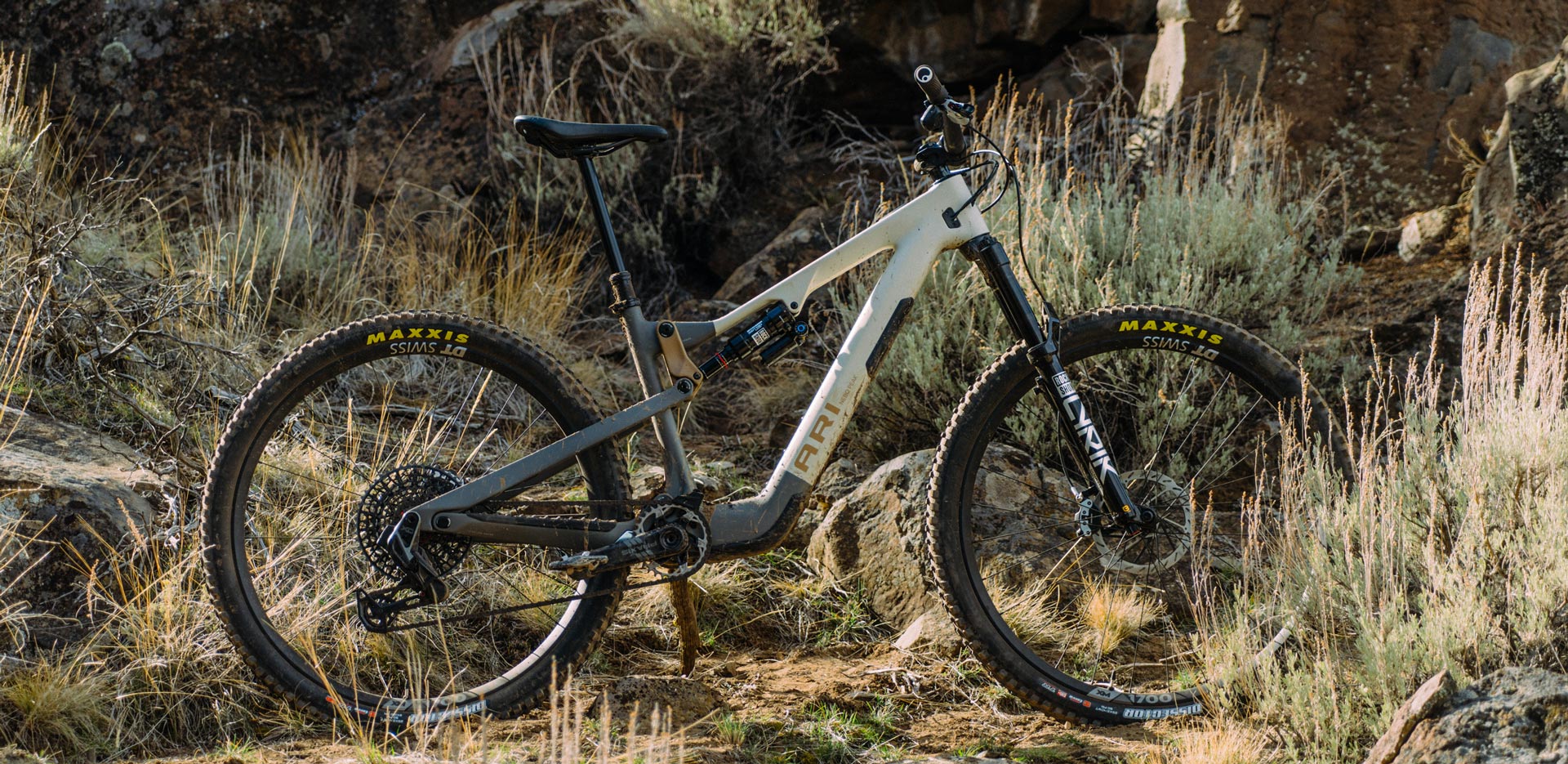

THE NEW ARI NEBO PEAK EMTB
PROMISING NEW LIGHTWEIGHT EMTB
Words by Drew Rohde | Photos by Dusten Ryen
Video edited by Brian Niles/Treeline Cinematics
SPONSORED CONTENT
Hot on the heels of Fezzari Bicycle’s re-branding effort, the new Ari Nebo Peak follows up the left, right jab with a solid uppercut to the eMTB market. Ari Bicycles, formerly Fezzari, sent us their new SL, lighweight Nebo Peak for some filming and initial ride time to help make this Dissected Feature possible. Built out of a fully integrated carbon fiber frame with 140mm of rear wheel travel and 150mm up front, the Fazua Ride 60-equipped Ari Nebo Peak looks like it will be a real contender for those in the market for a mid-assist eBike. Let’s dive into the Nebo Peak and hear from the Ari Bicycles team on how the development and testing process went down.
As with all of our Dissected Features, this is not intended to be a long term review or endorsement of a product but is instead a chance for our viewers and readers to get a deep dive look into some of the newest tech and products in the mountain bike space. We thank Ari Bikes for the opportunity to create this feature and getting you some valuable beta on this impressive new eMTB.
ABOUT THE ARI NEBO PEAK
We met with Ari Bicycles product manager Ty Bishop who walked us through everything from the development of the frame to the lengthy process of testing four different drive units before deciding to go with Fazua’s Ride 60 drive unit and their 430Wh battery. Along with impressive power and quietness, Fazua claims that their drive unit operates much more efficiently than other similarly powered drive units and can deliver a notably better range with a similarly sized battery to other manufacturers. In fact, according to this document shared with us, it seems that the Fazua drive unit can deliver anywhere from 31.9% to 37.2% increased vertical range compared to the TQ HPR50 with only a 16.3% larger battery.

FRAME AND FEATURES | New for Ari Bicycles is the relocation of the GA-Link (Geometry Adjust). Previously, on Fezzari bikes the GA-Link was located in the lower shock mount however on the new Ari Nebo Peak, the link is found in the chainstay pivot. This allows for more adjustability as angles can be changed as well as chainstay lengths. The Short and Long settings change the stays by 5mm and roughly .5 degree on the head tube and seat tube. It also makes the bike ride better for riders who want to swap out the 29” rear wheel for a 27.5” for a Mullet or mixed wheel setup. Consideration has also been made for riders who want to take advantage of the 1.5” headset cups to further modify reach or angles with aftermarket cups.
Speaking of geometry, Ari has opted to give this 140/150mm rig a nimble and lively geometry set. With 29” wheels the headtube goes from 65 to 64.5 degrees with a seat tube angle that changes from 77.5 to 77 degrees. Going with a mullet/mixed wheel will give you a bit slacker front, although we’d likely choose putting a 160mm fork on front of this bad boy for our own geo and big-hit customization.
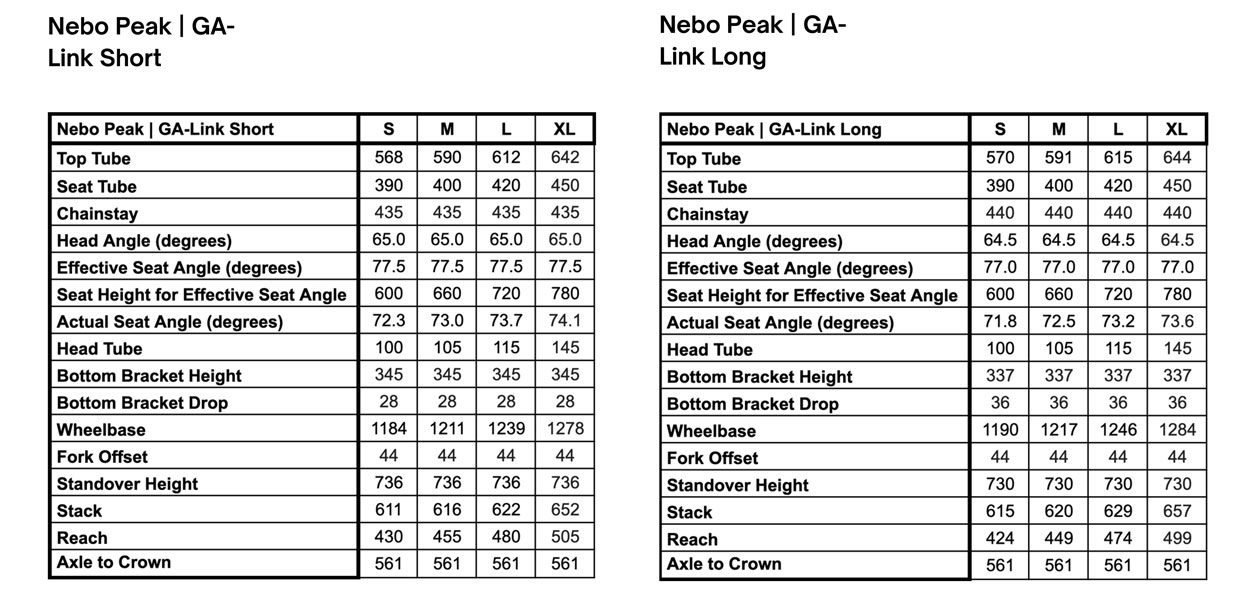

WHAT IS TETRA LINK SUSPENSION? Ari claims that their goal with the TetraLink design is optimized to deliver a “Dynamic and balanced riding experience.” It is a Horst Link, four-bar suspension platform that gets tuned to suit each of their model’s intended applications. We asked Ty Bishop, Nebo Peak Product Manager where those priorities landed on the Nebo Peak. “We’d say that the suspension kinematics and tune favor descending on the Nebo. When you’ve got a drive unit to help lighten the load, we can focus more on sensitivity and suppleness while also ensuring there’s enough progression at the end of the stroke,” Bishop told us.
Aside from the logo change and new model, the Ari Nebo Peak has the same attention to detail, fit and finish that Fezzari customers have grown to expect. It’s part of the reason Ari has 4.9 Star reviews on their Customer Service ratings on Google Reviews. While many things carry over, a new thing found inside the Ari Nebo is their tube in tube routing that sits along the inside wall of the frame tubing. This gives the Nebo a very quiet ride experience, combined with some impressive acoustic management of the Fazua drive unit and chainstay protector, this bike is stealthily silent on the trail.
Like Fezzari before it, Ari customers will be able to choose from different price point builds focused on delivering a blend of value and performance. Also, riders can work with their customer service team to dial in things like cockpit, bar width and some other customizations to get the bike dialed right out of the box.

NEBO PEAK COMP
$5,999
Frame: Carbon Fiber | 140mm Tetralink Suspension
Fork: DVO D1 Diamond 36 | 150mm
Shock: DVO Topaz 3
Drivetrain: Shimano SLX
Brakes: TRP Slate EVO
Wheels: DT Swiss M 1900
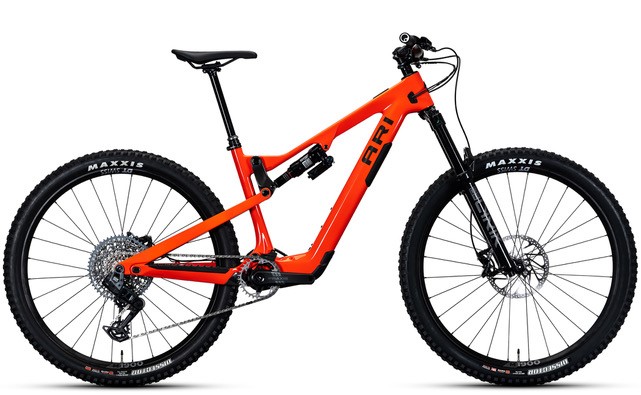
NEBO PEAK ELITE
$6,999
Frame: Carbon Fiber | 140mm Tetralink Suspension
Fork: Rockshox Lyrik Select+ | 150mm
Shock: Rockshox Super Deluxe Select+
Drivetrain: SRAM GX Eagle AXS Transmission
Brakes: TRP Trail EVO
Wheels: DT Swiss M 1900
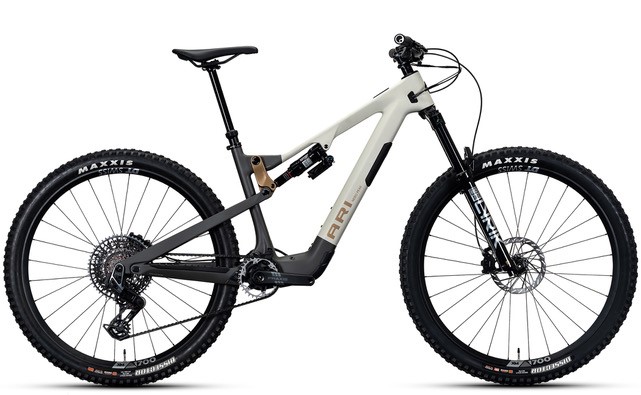
NEBO PEAK PRO
$7,999
Frame: Carbon Fiber | 140mm Tetralink Suspension
Fork: Rockshox Lyrik Ultimate | 150mm
Shock: Rockshox Super Deluxe Ultimate
Drivetrain: SRAM XO Eagle AXS Transmission
Brakes: SRAM Maven Silver
Wheels: DT Swiss XM 1700
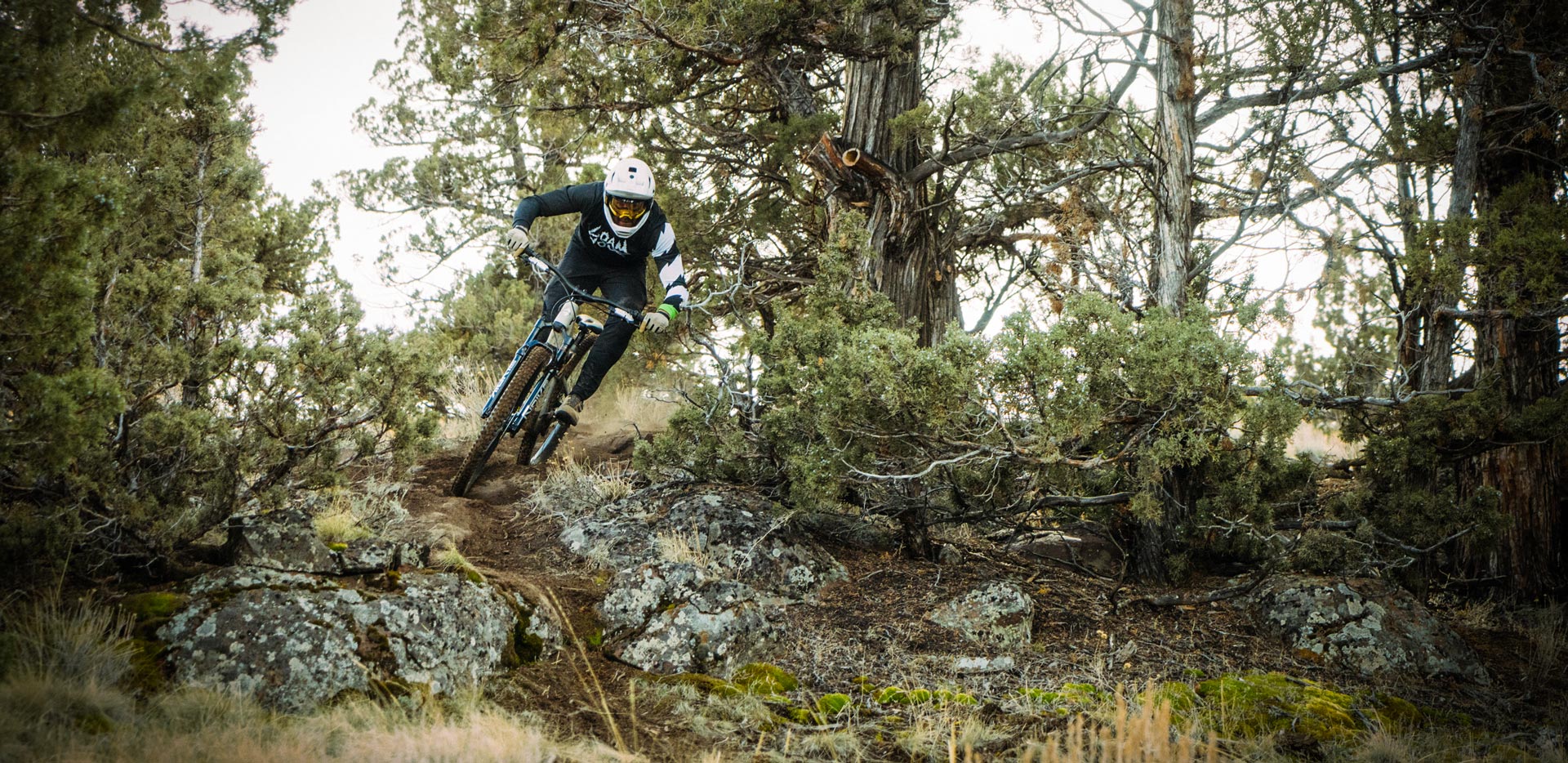
THE WOLF’S FIRST IMPRESSION
Our time aboard the Ari Nebo Peak has been limited and primarily focused on the filming and shooting of this feature. As always, we like to be as transparent as possible because we take our long-term testing process and integrity very seriously. That said, it is easy to take away a few key notes from bikes when you’ve ridden as many of them as we have.
When I think about my time aboard the Nebo Peak so far, my three takeaways are: silence, playfulness, and fun. The Fazua drive unit is already one of the quietest out there, but somehow it seems the Ari’s acoustics have managed to make it even quieter than others. Of course, this could be because it’s a brand-new unit or perhaps we just got lucky and got a nice Fazua unit. Either way, we’ll report back in our long-term review.
Moving into the playfulness and fun aspect of the bike, the well-rounded geometry suited our initial rides quite well. Lots of technical climbs, big rock gardens and some high-speed descending with the odd steep chute and rock garden or 5-7-foot drop. The climbs were lively and fun, we could play between features, easily hop up ledges and just generally have a good time. When it came time to descend, the frame’s stiffness and light weight made it a joy to throw around. In fact, there were a couple of instances where I’d pick up off a little feature and go just a bit too far, landing in the entrance of the corner instead of a bike length before. Luckily the powerful, but not perfect, SRAM Maven brakes were there to save me and scrub speed as I slammed the back into the turn.
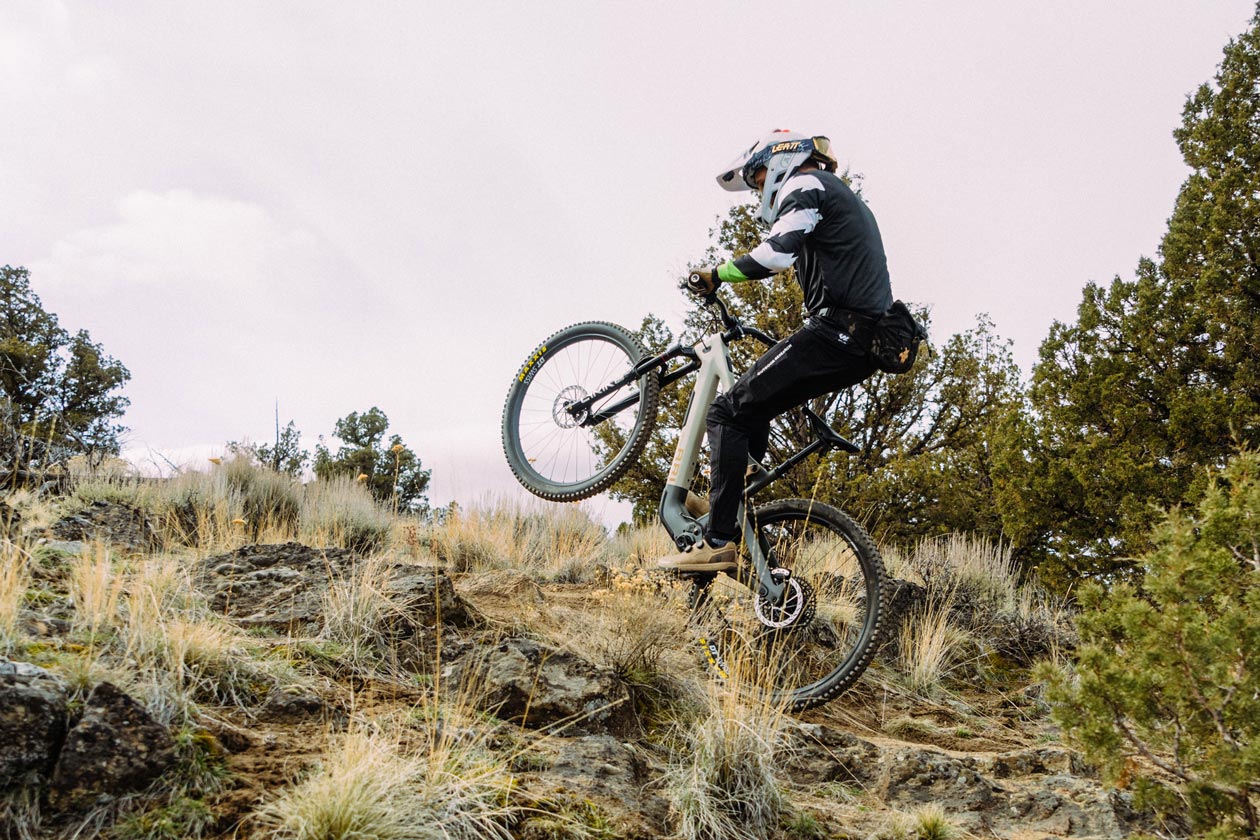
An area I would still like to play with is tire pressure and rebound settings on the suspension. There were a few instances on very high speed and chattery trails where I felt the bike was just a little too light in the feet and I wanted a bit more of a planted, stable feel. Granted this was not something we encountered on every trail, but on our long high-desert descents, I’d like to play with putting the bike in the slacker head tube setting and experimenting with the suspension and tire pressures a bit more.
Beyond that issue, which I’m confident time and tweaking will resolve, I’m left with a very positive opinion of the Ari Nebo Peak so far. We could see some riders not being thrilled that battery removal will take about 10-15 minutes to do, but time will tell how often we feel that’s a major hindrance in our routine. While we look forward to putting a lot more time on this bike, if you’re looking to decide before that day comes, we feel pretty confident at this point saying the Ari Nebo Peak is definitely a contender and worth looking at for those in the mid-power SL eMTB market.
Weight: 41lbs (As built)
Size: Large
Website: Aribikes.com


